Overzealous Access Causes Loss of Tooth
Lateral perforation during attempted endodontic access is a particularly difficult problem to deal with because of the associated destruction of coronal tooth structure that usually occurs at the same time.
Interestingly, a lot of the perforations occur in the maxillary premolar area are errors in positioning of the patient rather than misdirection of the Bur. It is important to have the patient’s head positioned in such a way that your hand piece is not drilling down toward the floor, frequently resulting in perforation of the distal aspect of the premolar. Conversely tilting the chair or the patient’s head too far back can result in deviation to the mesial which is a fairly common occurrence in the maxillary first premolar because of the narrow cervical width and mesial concavity.

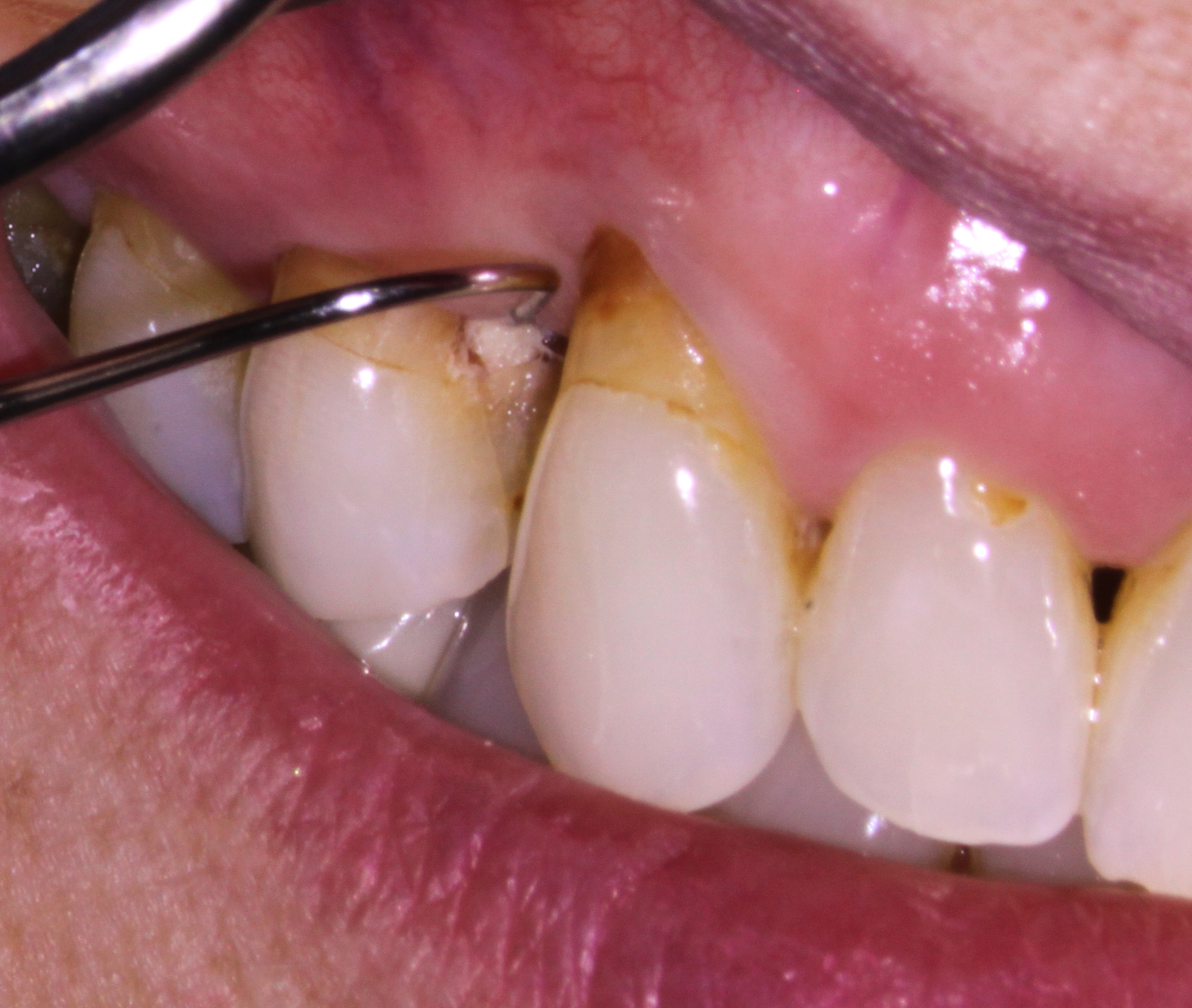
Whenever we make access into premolars, we must always pay special attention to guiding the direction of the Bur down the axis of the tooth. Access can be extremely challenging in situations where crowns are present because the Crown may reorient, tip or realign the crown axis in such a way which makes initial access prone to misdirection. Deep calcification can also make orientation difficult. This may mean occasionally stopping and examining the direction of penetration.
Before making access, always check with the PA image first to see (1) if the axis of the crown and axis of the root are dramatically different, and (2) note the level of canal calcification and relative position of pulp i.e./ How far into the tooth do you have to go before you expect to encounter the pulp and (3) in which direction that may be. When in doubt STOP, take a bitewing or cbCT and check to make sure that you are heading in the right direction.
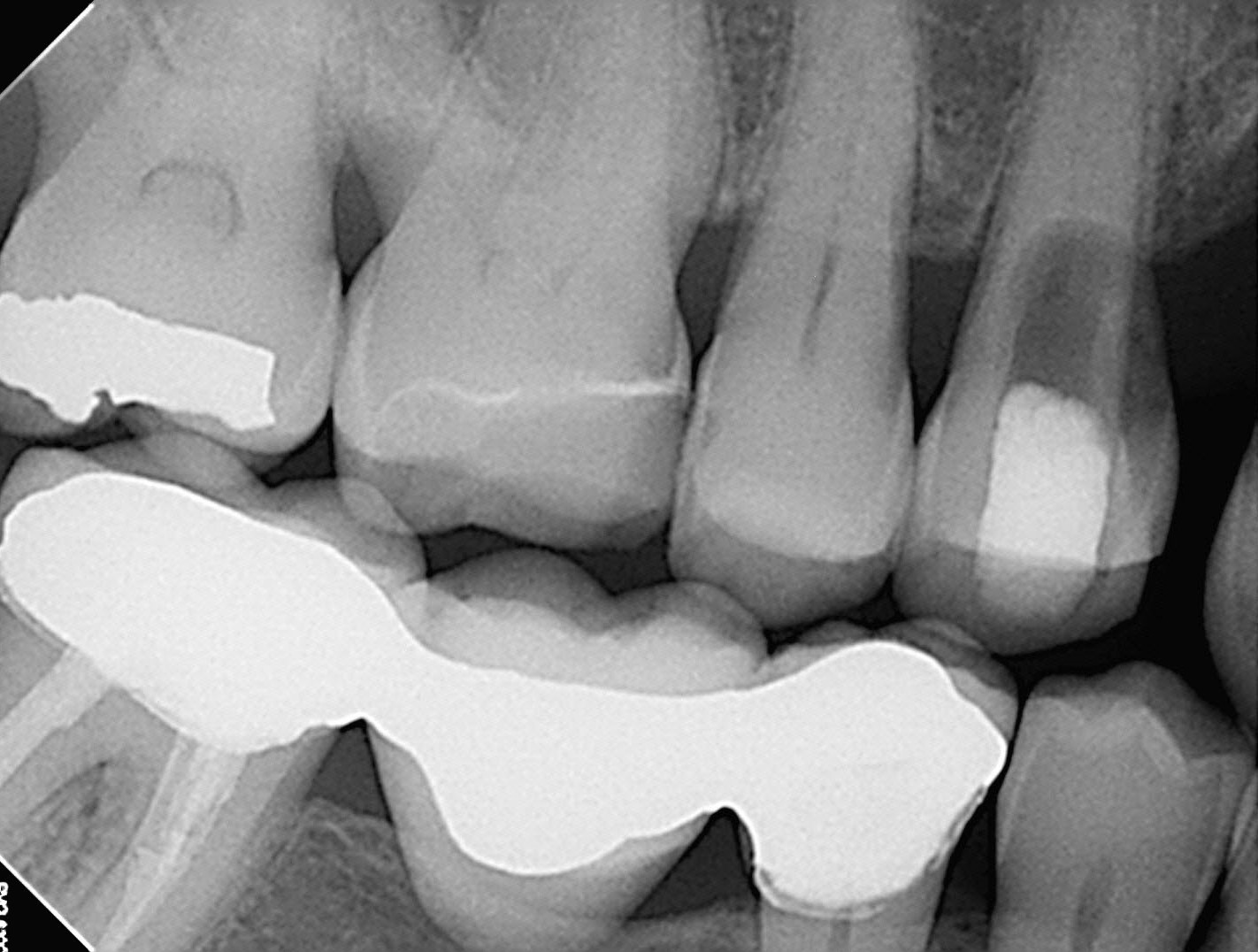
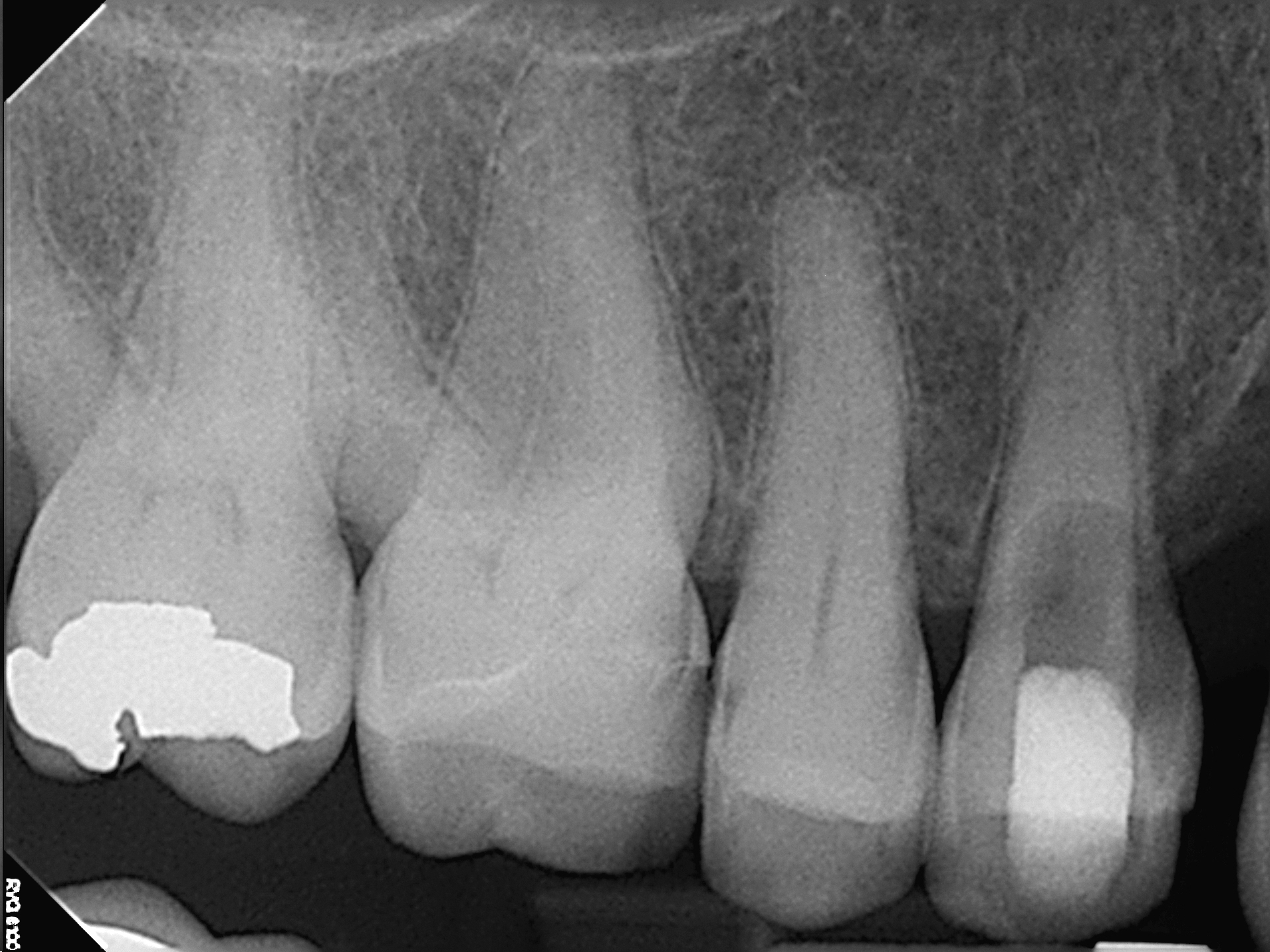
Further indiscriminate dentin removal until bleeding occurs can only lead to gross perforation and further complications. When perforations are small, sometimes Crown lengthening can be performed to alleviate the problem. However, this always requires some sort of Periodontal surgical procedure and perf repair of the root, subgingival crown margin and a less than desirable chronic periodontally inflamed area.
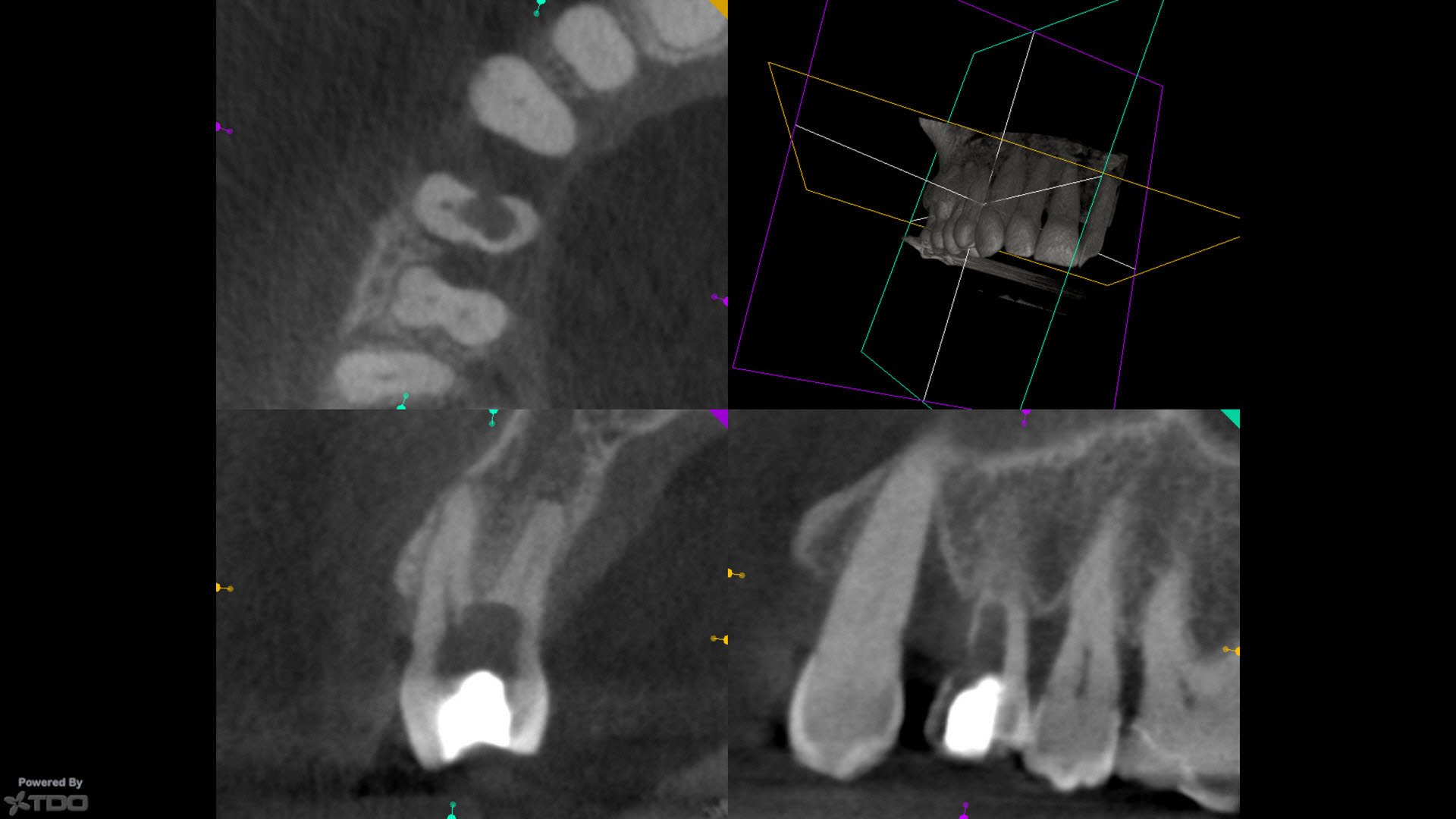
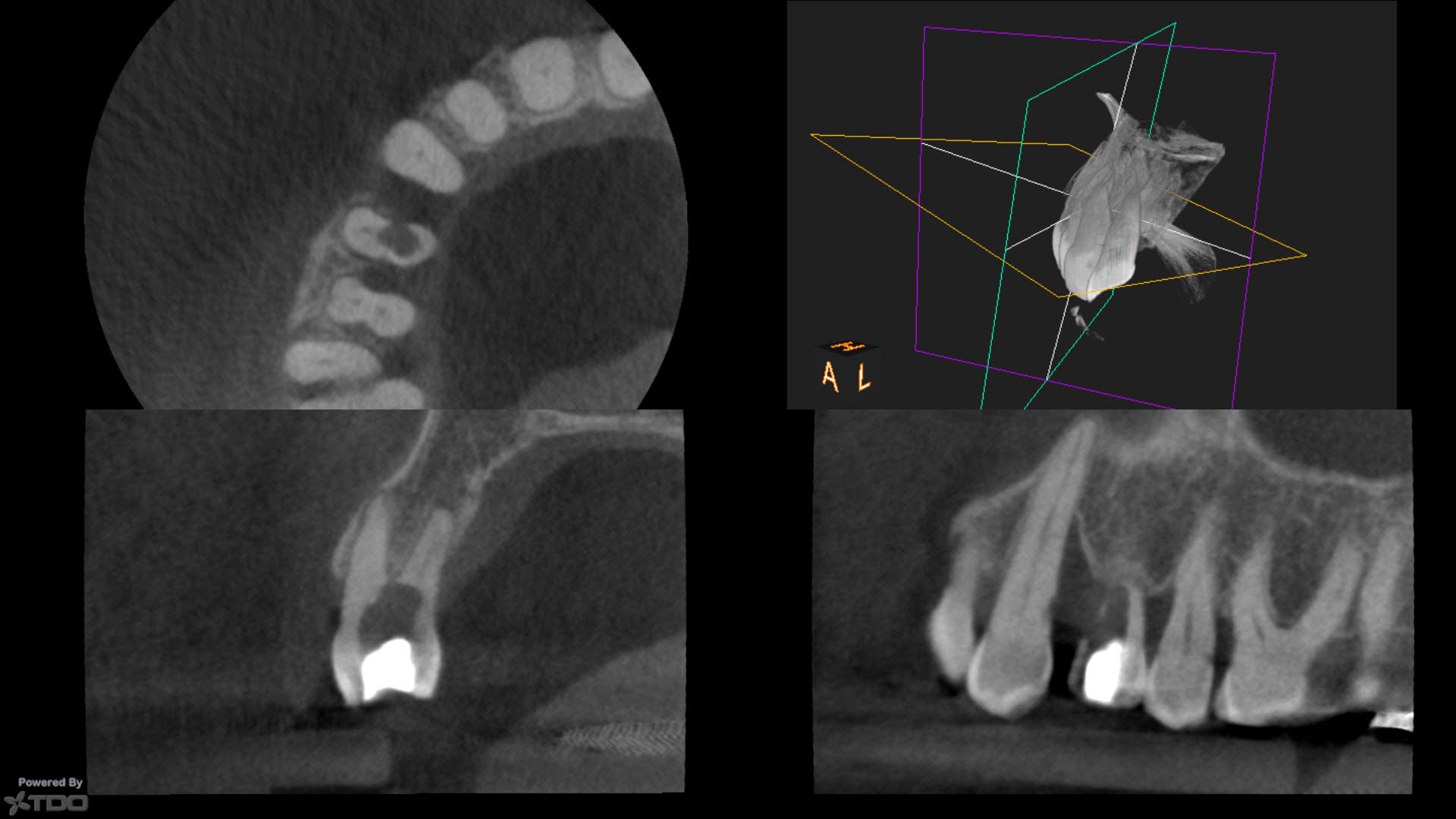
Unfortunately, in this case, the tooth was grossly perforated and tooth structure so compromised that it could not be saved. The tooth was iatrogenically lost and would need to be replaced by an implant.
